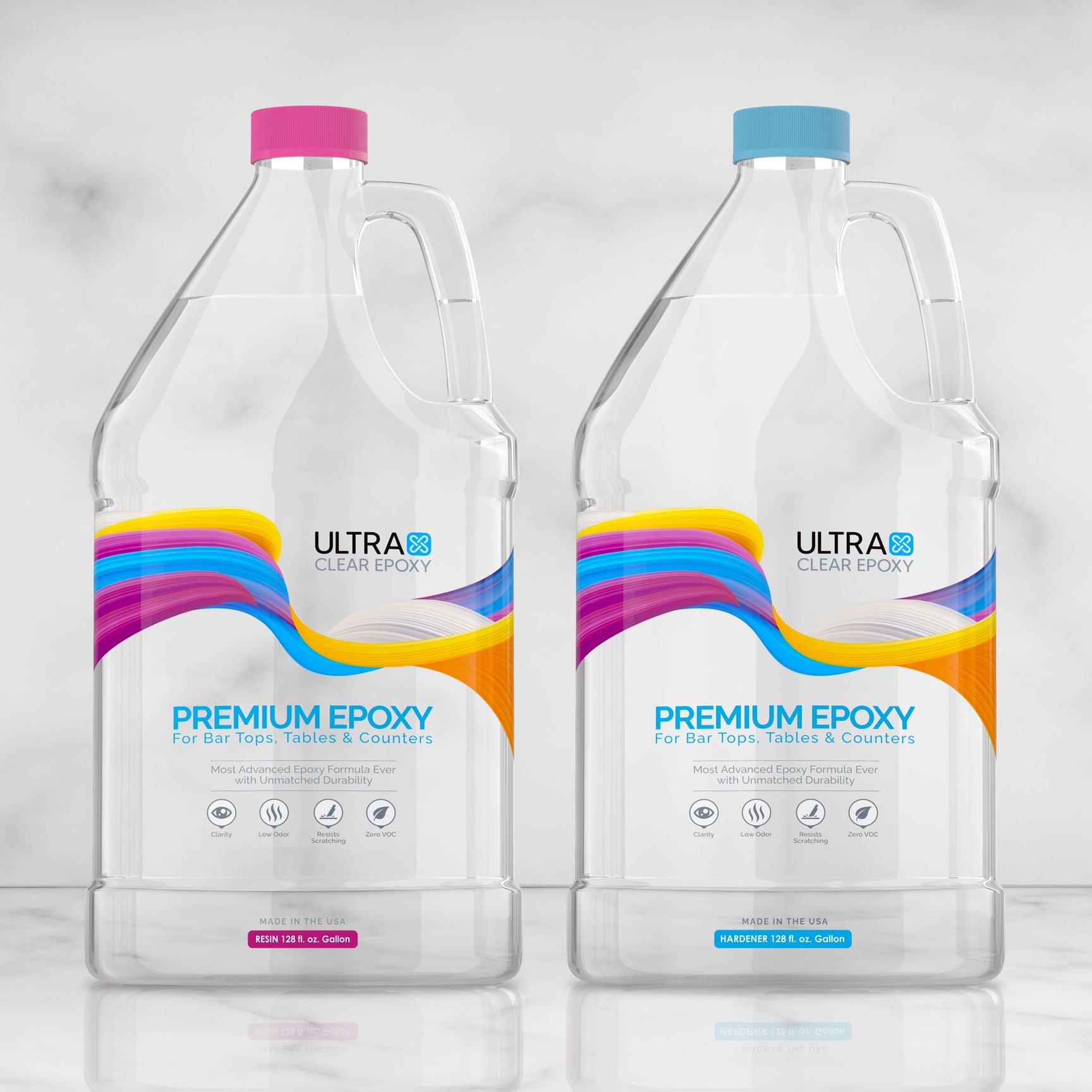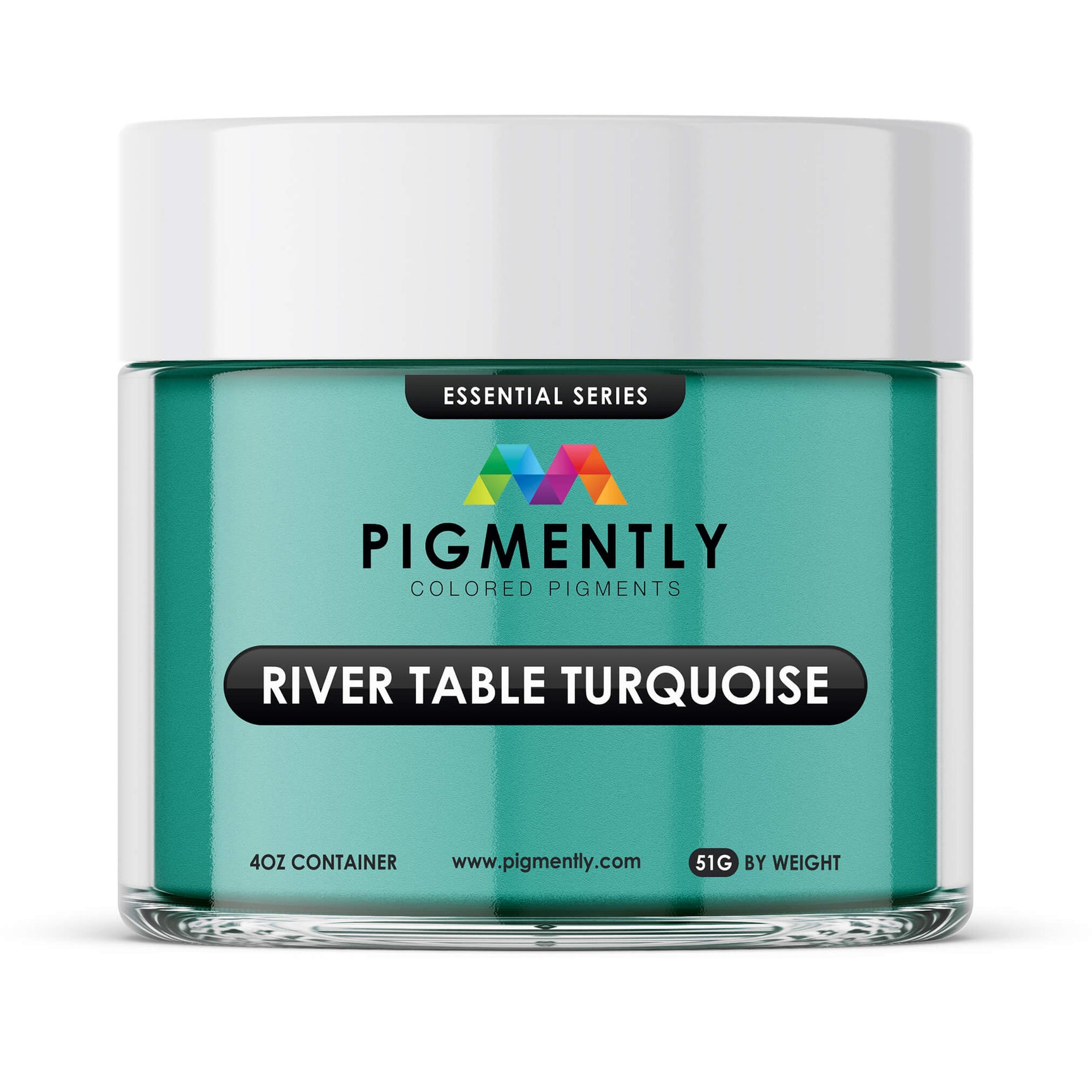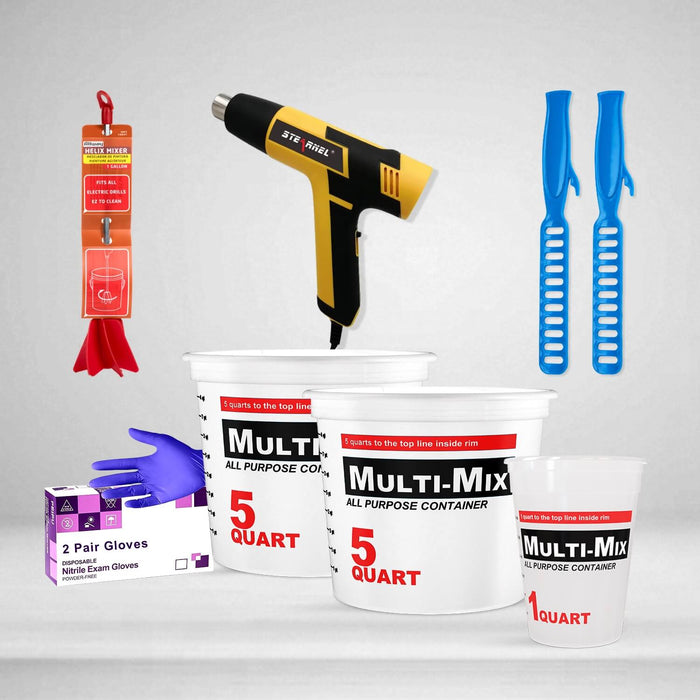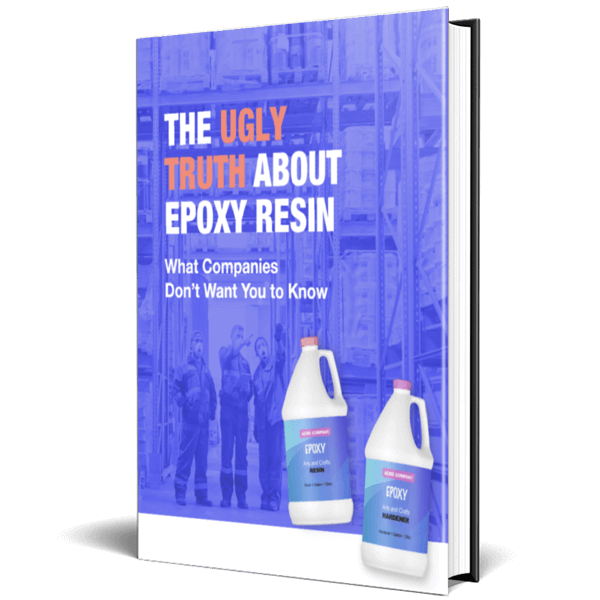Epoxy exists in many different types. Among them is Deep Pour Epoxy, which is one of the more specialized resin options. Specifically designed for thick layers, Deep Pour Epoxy is less viscous than most epoxies and runs a bit like water. As a consequence, it needs to be treated slightly differently from the typical epoxy fare.
In this article, we'll be answers a variety of questions about Deep Pour Epoxy, including what it is. By learning more about it, you'll be better able to make sound decisions when planning and performing your epoxy projects.
12 FAQs About Deep Pour Epoxy
We'll be answering 12 common questions in this article. To jump straight to any question, simply click on the link for it in the list below.
FAQ #1: What is deep pour epoxy?
Deep pour epoxy is a type of epoxy resin specifically formulated for thicker pours, typically ranging from 1/8 inch to 2 inches in thickness per layer. It is designed to cure in thicker layers without trapping in air and produces minimal heat buildup, making it ideal for projects like river tables, large pours, and encapsulating items in resin.
The maximum depth of a deep pour epoxy varies by the brand and quality of the epoxy. For optimal layer depth and clarity, we recommend UltraClear Deep Pour Epoxy, which supports layers of up to two inches and cures to a crystal-clear finish.
Learn more about deep pour epoxy here!
FAQ #2: How thick can I pour deep pour epoxy in one layer?
Deep pour epoxy can generally be poured up to 2 inches thick in one layer. However, it’s important to check the manufacturer’s instructions, as the maximum pour thickness can vary depending on the specific product used.
For UltraClear Deep Pour Epoxy:
- Beginners: We recommend limiting your layers to 2 inches max if you're unfamiliar.
- Experienced users/professionals: It's possible to pour a layer up to 4 inches without a problem if handled carefully.
FAQ #3: How long does deep pour epoxy take to cure?
The curing time for deep pour epoxy varies based on factors like temperature, humidity, and the thickness of the pour. Typically, it can take anywhere from 24 to 72 hours to fully cure. Larger pours or cooler environments may require additional time.
When using UltraClear Deep Pour Epoxy, the optimal humidity is anything below 60% and the ideal temperature is 75°F.
FAQ #4: Can I use deep pour epoxy for thin layers?
While deep pour epoxy is specifically designed for thicker pours, it can also be used for thinner layers. However, for thinner applications (1/8 inch), a regular table top epoxy or art-and-craft resin may be more suitable, as it cures more quickly and to a much stronger finish.
FAQ #5: Can I color deep pour epoxy?
Yes, you can add pigments, dyes, or alcohol inks to deep pour epoxy to create custom colors and effects. Be sure to mix the colorant thoroughly into the epoxy to avoid uneven coloring or bubbles.
UltraClear Deep Pour Epoxy is highly receptive to these colorants. Learn how to blend them in here!
FAQ #6: Do I need to seal wood (or other materials) before using deep pour epoxy?
Yes, it's recommended to seal the surfaces of any porous material like wood with a thin layer of epoxy or another suitable sealer before pouring deep pour epoxy. This helps prevent the resin from soaking into the wood and ensures proper adhesion and a smooth finish.
FAQ #7: What temperature should I use when working with deep pour epoxy?
The ideal temperature for applying deep pour epoxy is 75°F. Extreme temperatures can affect the curing process, so it’s important to maintain a stable, moderate temperature in your workspace.
Read how to achieve a perfect cure with these 5 tips!
FAQ #8: How do I prevent bubbles in deep pour epoxy?
To minimize air bubbles, mix the epoxy slowly and avoid introducing air while pouring. After pouring, use a heat gun or torch to gently pass over the surface to release any trapped air bubbles. Be careful not to overheat the resin.
FAQ #9: Can I pour multiple layers of deep pour epoxy?
Yes, you can pour multiple layers of deep pour epoxy, but each layer should be allowed to cure partially before applying the next. In some cases, a light sanding is advisable.
For larger projects like river tables, it's common to pour in stages to control the curing process and prevent excessive heat buildup.
Learn more about applying multiple layers of epoxy here.
FAQ #10: Can I sand and polish deep pour epoxy?
Yes, once the deep pour epoxy has fully cured, you can sand and polish the surface to achieve a smooth, glossy finish. Start with a lower grit sandpaper to remove any imperfections, then gradually work your way up to finer grits before polishing.
We've written guides to sanding and polishing, located here:
FAQ #11: What happens if I pour too thick of a layer of deep pour epoxy?
Pouring too thick of a layer can cause excessive heat buildup during the curing process, which may lead to cracking, cloudiness, or even the epoxy not curing properly. Always follow the manufacturer’s recommended pour thickness for the best results.
For UltraClear Deep Pour Epoxy, the recommend pour thickness is a layer no greater than 2 inches deep.
FAQ #12: Is deep pour epoxy safe to use?
Deep pour epoxy is generally safe when used as directed, but it’s important to wear protective gear such as gloves, goggles, and a respirator to avoid skin and eye contact with the chemicals. Always work in a well-ventilated area and follow the manufacturer’s safety guidelines.
Avoid using low-cost "budget brands", which may use subpar ingredients or be manufactuered in a place with low quality and safety standards.
For more on epoxy safety, check out our guide here!
UltraClear Epoxy: Resin products of unmatched quality
As with any material, epoxy resin has both pros and cons. But no other sealant has so few weaknesses, and that's what puts epoxy above all other options when it comes to being a finish for high-traffic fixtures and furniture such as countertops, table tops, and bar tops. And among epoxy resin products, there are none that match the quality of UltraClear.
You can find our UltraClear Epoxy products on the following pages:
- UltraClear Bar & Table Top Epoxy: The classic choice for bar tops, countertops, and table tops. Rock-solid, waterproof, and crystal-clear.
- UltraClear Deep Pour Epoxy: Our deep pour casting resin. Ideal for thick layers, such as those needed for river tables.
- UltraClear Art & Craft Epoxy: Our arts and crafts resin, designed for smaller artistic endeavors which typically involve resin molds and require a bit more fluidity than bar top epoxy.
Epoxies that endure, with minimal upkeep
With high chemical and physical resistance, UltraClear resins can withstand and endure many forms of wear and tear without breaking a sweat or showcasing any cosmetic damage.
Plus, in addition to its ease of application, they also require little upkeep to maintain its pristine appearance. With a high-quality epoxy finish, you can expect a minimum lifespan of 7 years, with no need for reapplication. Beyond that, it's a breeze to renew that coating, requiring only a light sanding and a fresh layer of epoxy.
Expert support from our resin specialists
For more information about epoxy, or for assistance with your epoxy project, contact us at UltraClear Epoxy, where you can speak with one of our epoxy experts. During business hours, you can also text chat online with one of our resin specialists by clicking the Help button at the bottom of your screen.

















